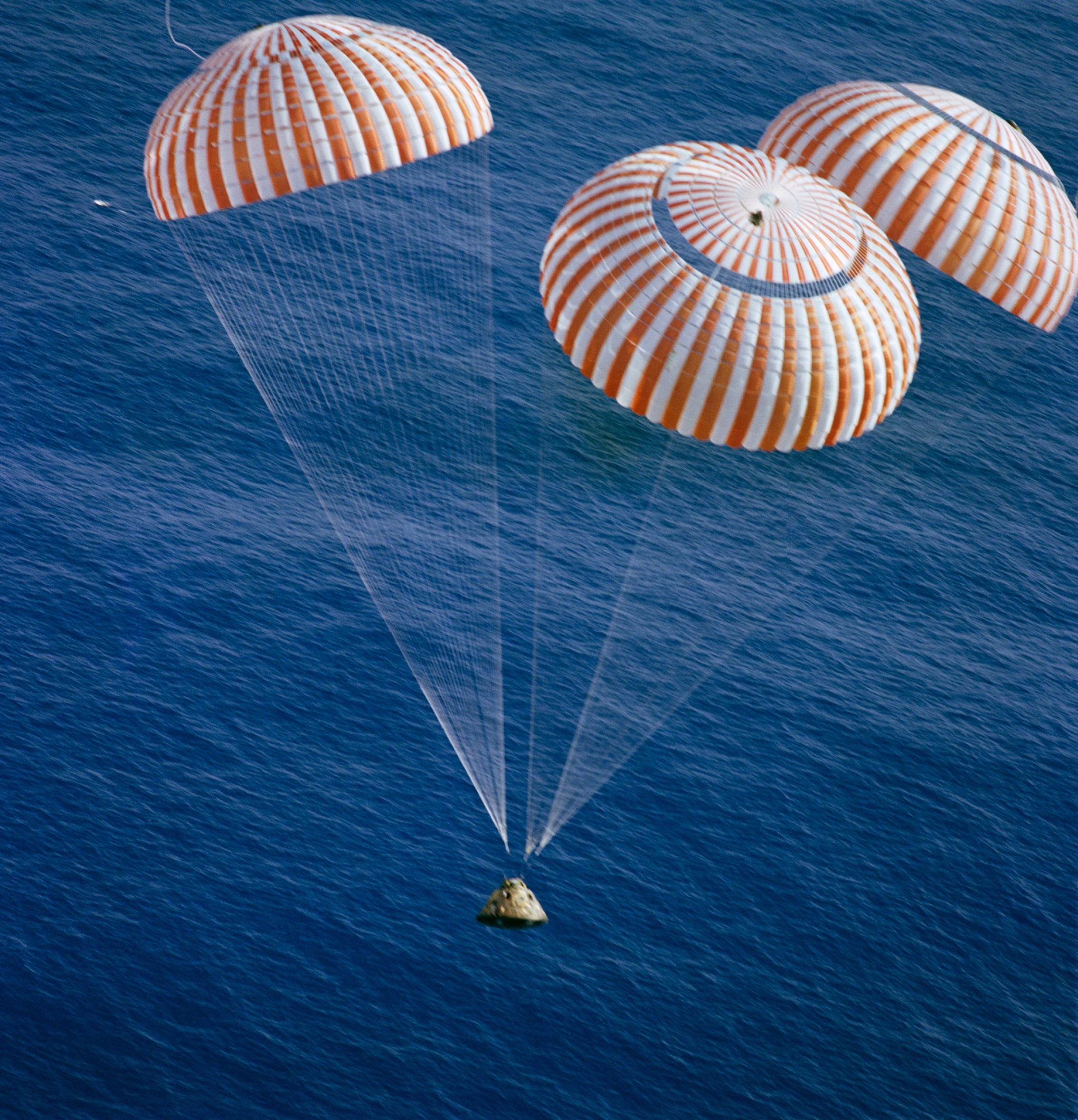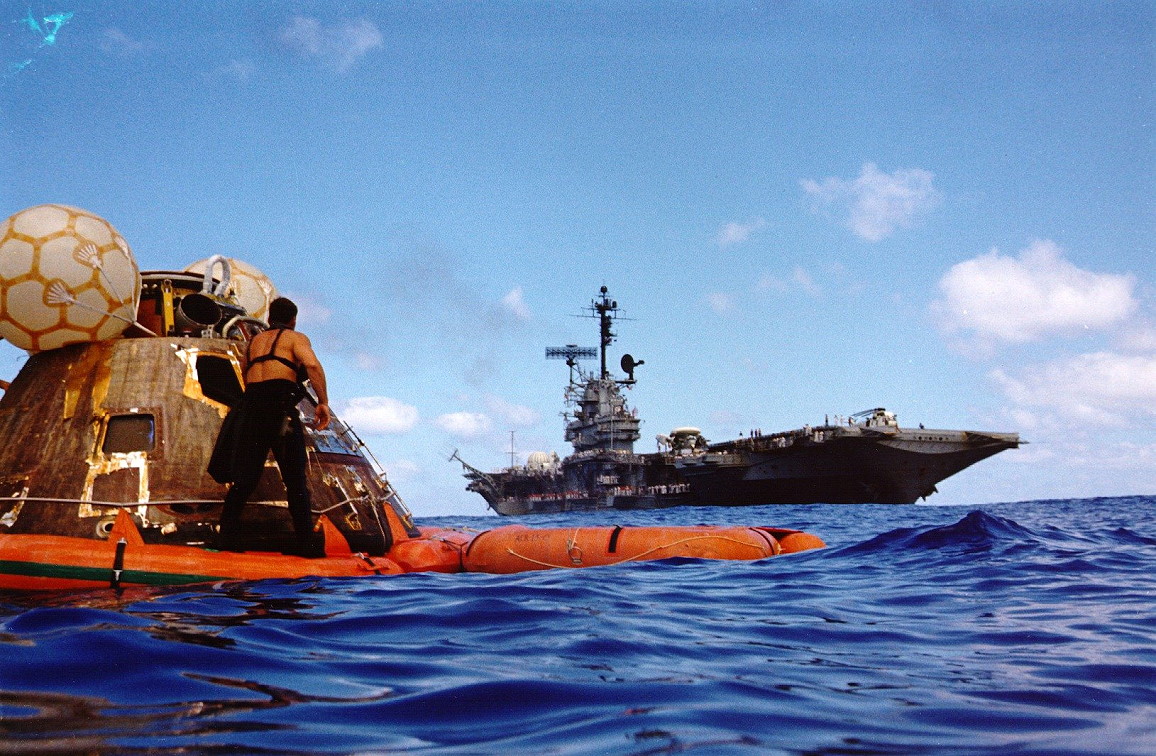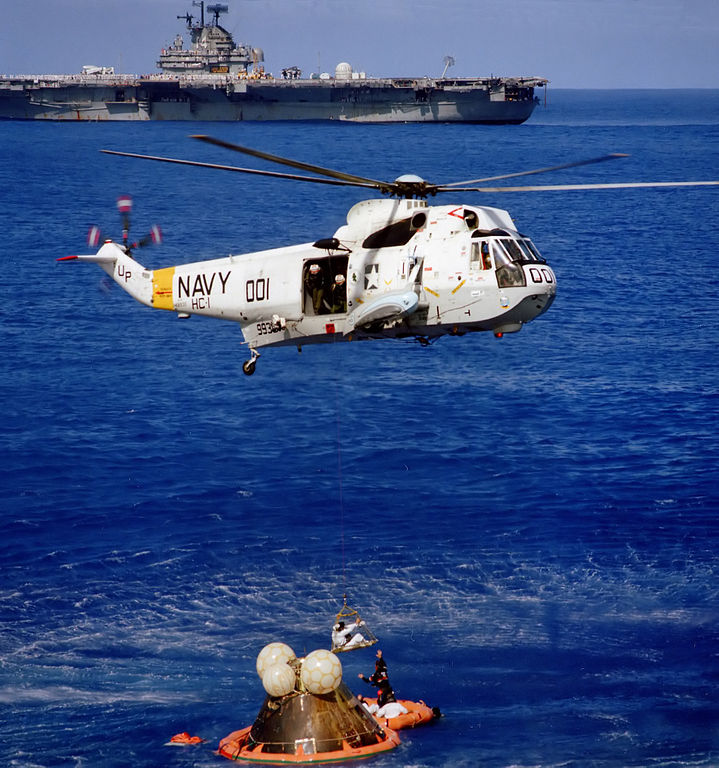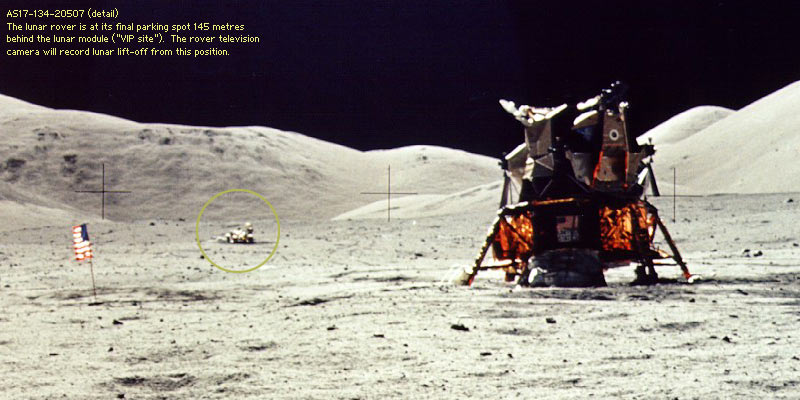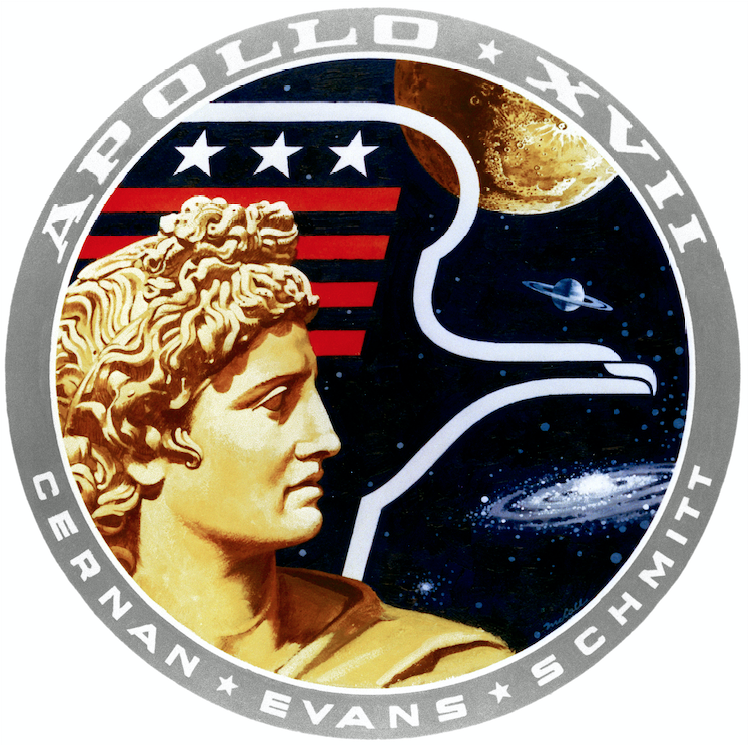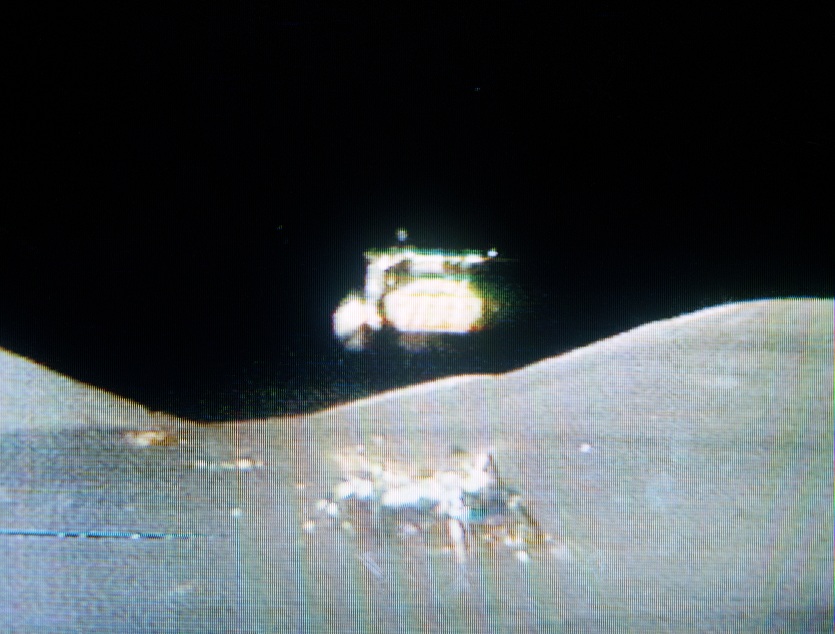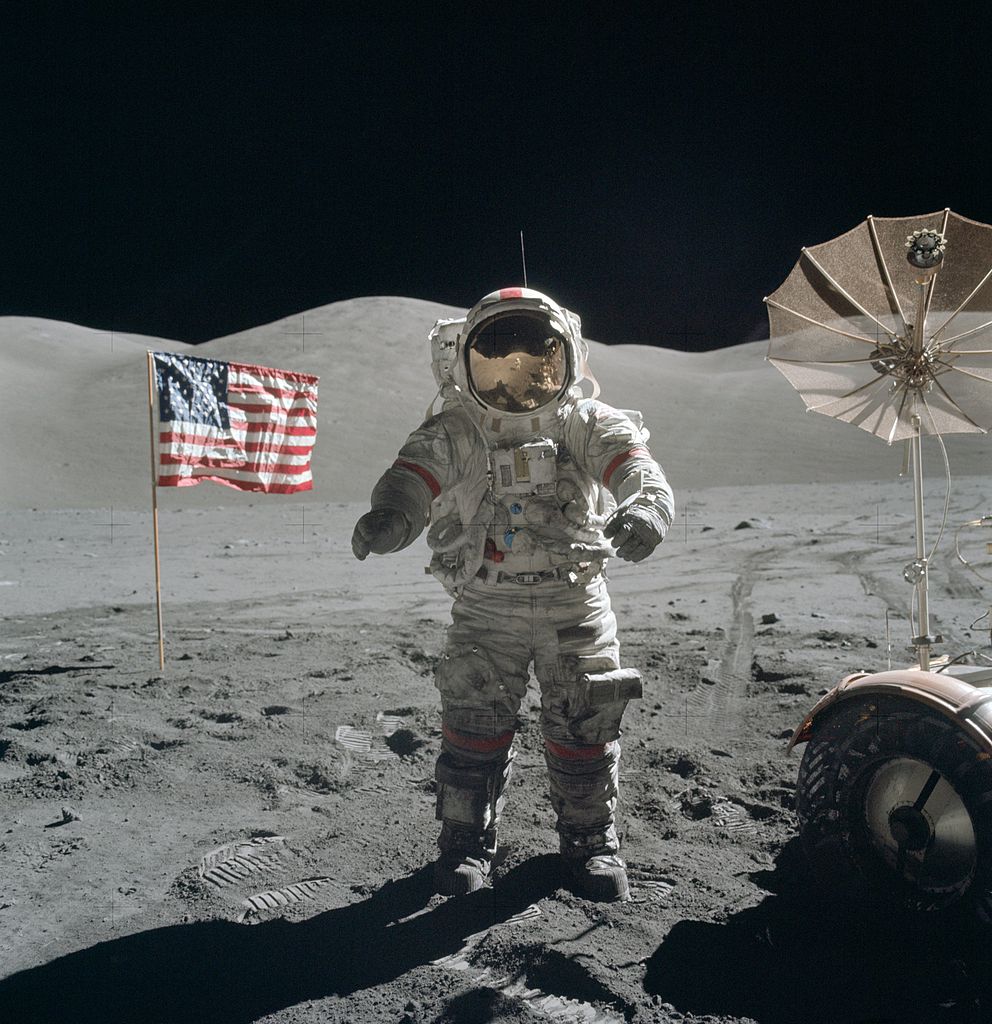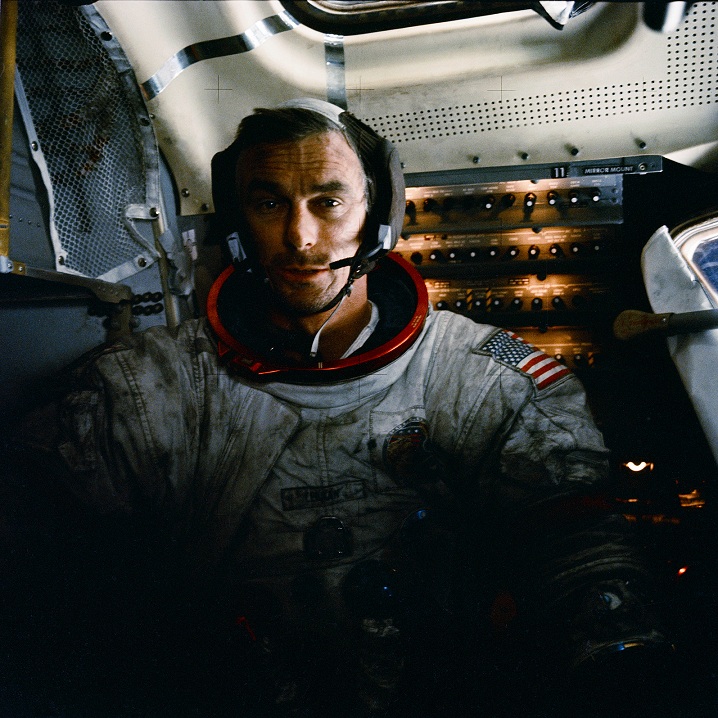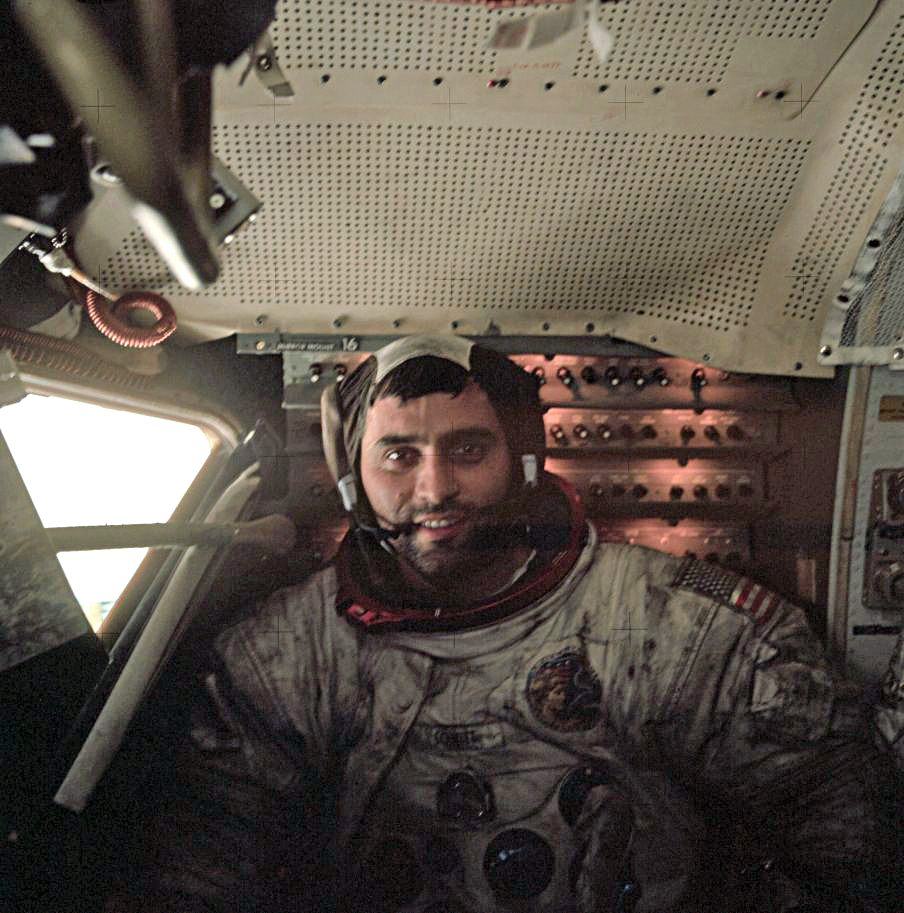
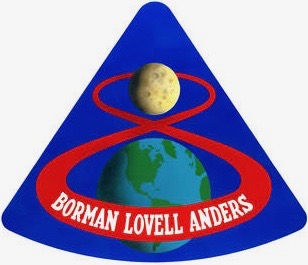 21 December 1968: At 12:51:00.7 UTC, Apollo 8 lifted off from Launch Complex 39A at the Kennedy Space Center, Cape Canaveral, Florida. Aboard were Mission Commander, Colonel Frank Frederick Borman II, United States Air Force; Command Module Pilot, Captain James Arthur Lovell, Jr., United States Navy; and Lunar Module Pilot, Major William A. Anders, U.S. Air Force.
21 December 1968: At 12:51:00.7 UTC, Apollo 8 lifted off from Launch Complex 39A at the Kennedy Space Center, Cape Canaveral, Florida. Aboard were Mission Commander, Colonel Frank Frederick Borman II, United States Air Force; Command Module Pilot, Captain James Arthur Lovell, Jr., United States Navy; and Lunar Module Pilot, Major William A. Anders, U.S. Air Force.
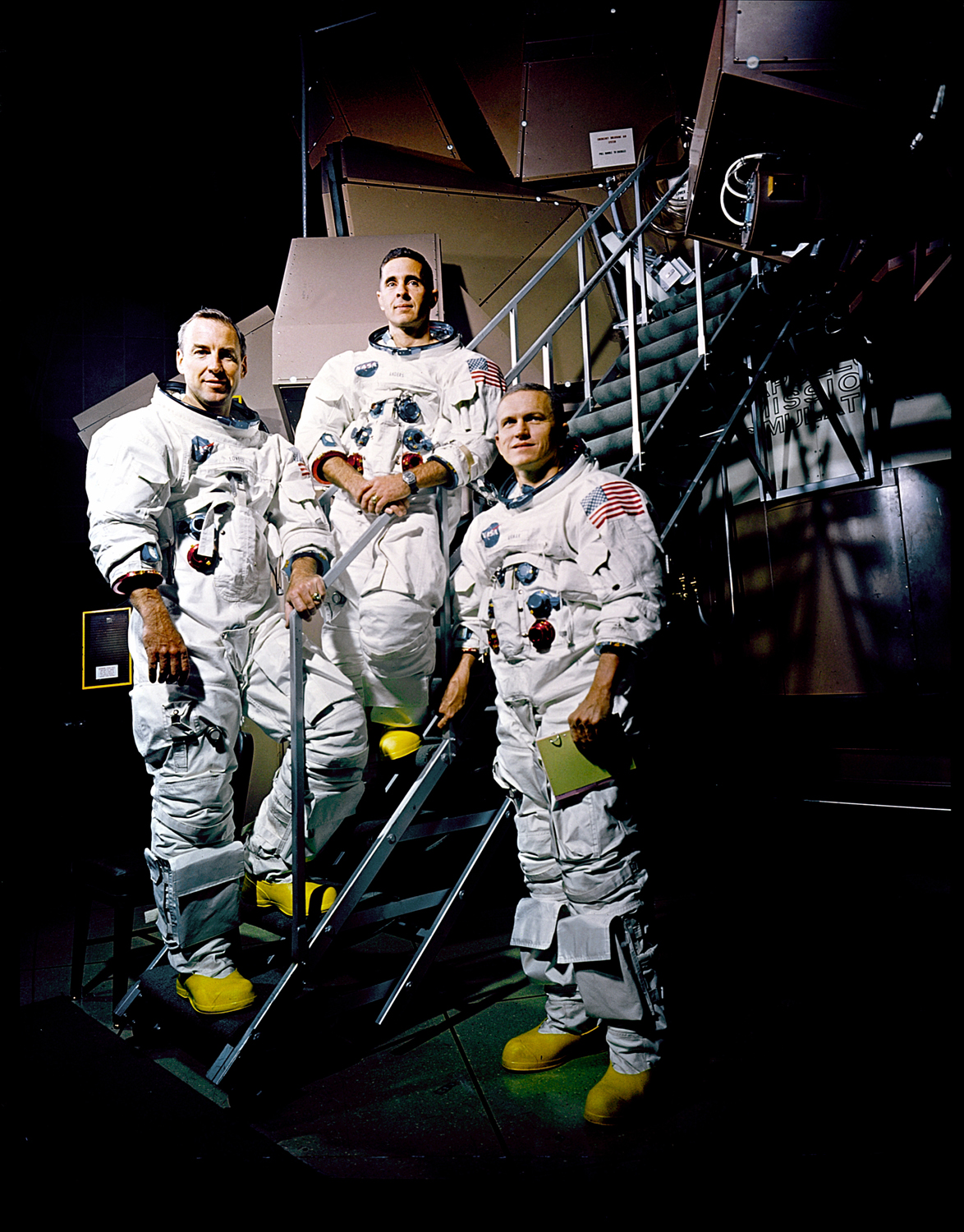
The center engine of the S-IC first stage shut down at 00:02.05.9, and the remaining four F-1 engines shut down at 00:02:33.8. First stage separation took place at 00:02:34.5.
The five Rocketdyne J-2 engines of the S-II second stage fired at 00:02.35.2. The launch escape tower was jettisoned at 00:03:08.6. The engine shut down at 00:08:44.0.and the second stage was jettisoned at 00:08:44.9.
The single J-2 of the S-IVB third stage ignited at 00:08:45.0, and cut off at 11:25.0. At 00:11:35.0, the Apollo 8 Command and Service Module, the Lunar Module test article, and the S-IVB third stage was injected into a nearly-circular 98 nautical miles × 103 nautical miles (113 statute miles × 119 statute miles/181 × 191 kilometers) Earth orbit.
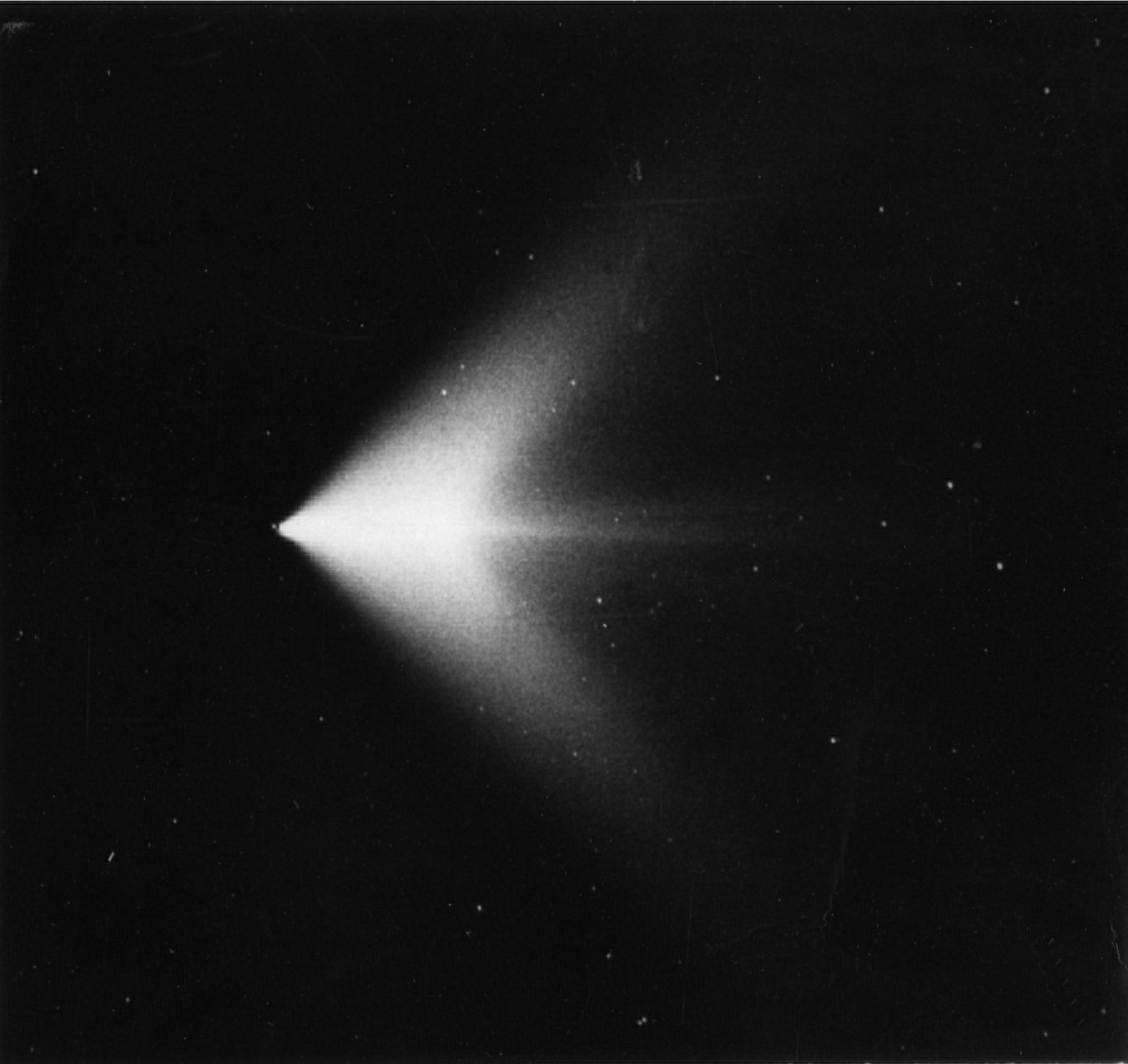
The S-IVB’s J-2 engine was restarted for Trans Lunar Injection (TLI) at 02:50:37.1, and cut off at 02:55:55.5. Apollo 8 was on its way to The Moon.
Apollo 8 was the second manned mission of the Apollo program. It was the first manned spacecraft to leave Earth orbit, travel to and orbit the Moon, then return to Earth.
The Saturn V rocket was a three-stage, liquid-fueled heavy launch vehicle. Fully assembled with the Apollo Command and Service Module, it stood 363 feet, 0.15 inches (110.64621 meters) tall, from the tip of the escape tower to the bottom of the F-1 engines. The first and second stages were 33 feet, 0.2 inches (10.089 meters) in diameter. Fully loaded and fueled the rocket weighed approximately 6,200,000 pounds (2,948,350 kilograms).¹ It could lift a payload of 260,000 pounds (117,934 kilograms) to Low Earth Orbit.
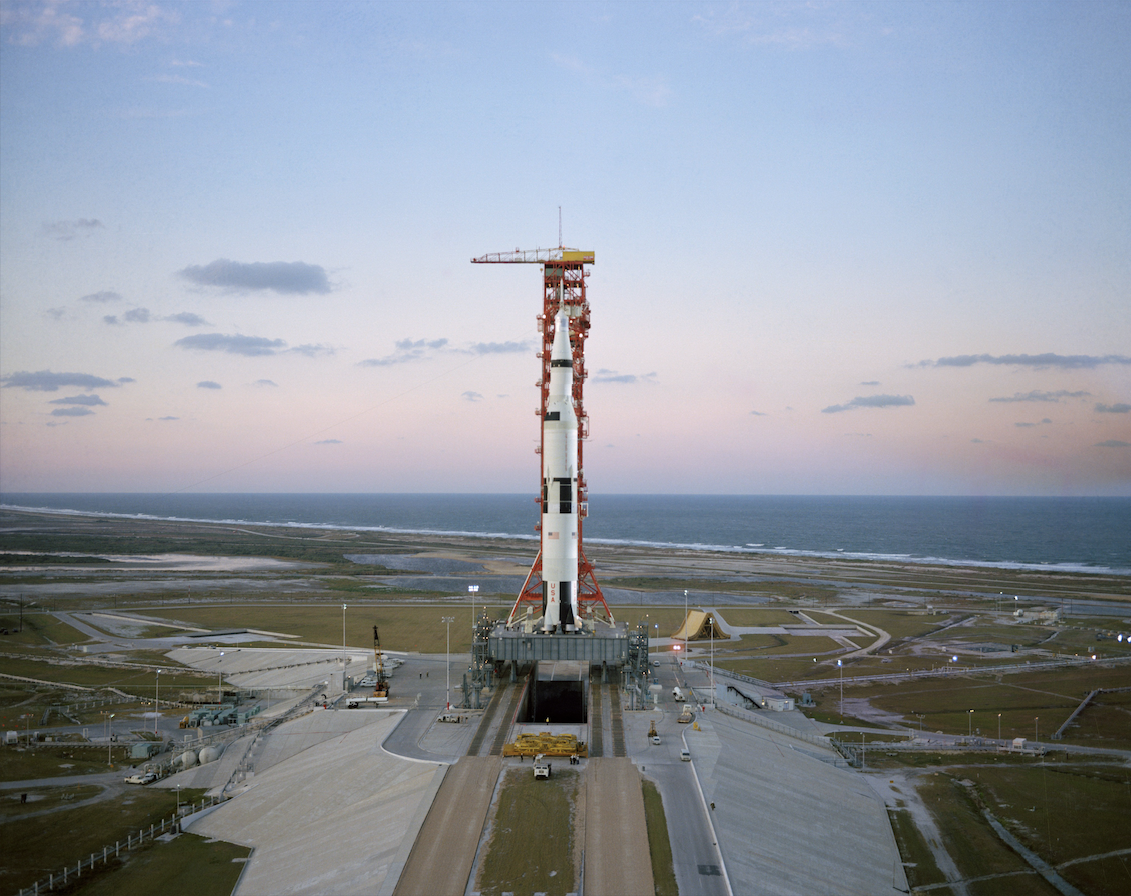
The first stage was designated S-IC. It was designed to lift the entire rocket to an altitude of 220,000 feet (67,056 meters) and accelerate to a speed of more than 5,100 miles per hour (8,280 kilometers per hour). The S-IC stage was built by Boeing at the Michoud Assembly Facility, New Orleans, Louisiana. It was 138 feet (42.062 meters) tall and had an empty weight of 290,000 pounds (131,542 kilograms). Fully fueled with 203,400 gallons (770,000 liters) of RP-1 and 318,065 gallons (1,204,000 liters) of liquid oxygen, the stage weighed 5,100,000 pounds (2,131,322 kilograms). It was propelled by five Rocketdyne F-1 engines, producing 1,522,000 pounds of thrust (6770.19 kilonewtons), each, for a total of 7,610,000 pounds of thrust at Sea Level (33,851 kilonewtons).² These engines were ignited 6.50 seconds prior to Range Zero and the outer four burned for 161.74 seconds. The center engine was shut down after 135.24 seconds to reduce the rate of acceleration. The F-1 engines were built by the Rocketdyne Division of North American Aviation at Canoga Park, California.
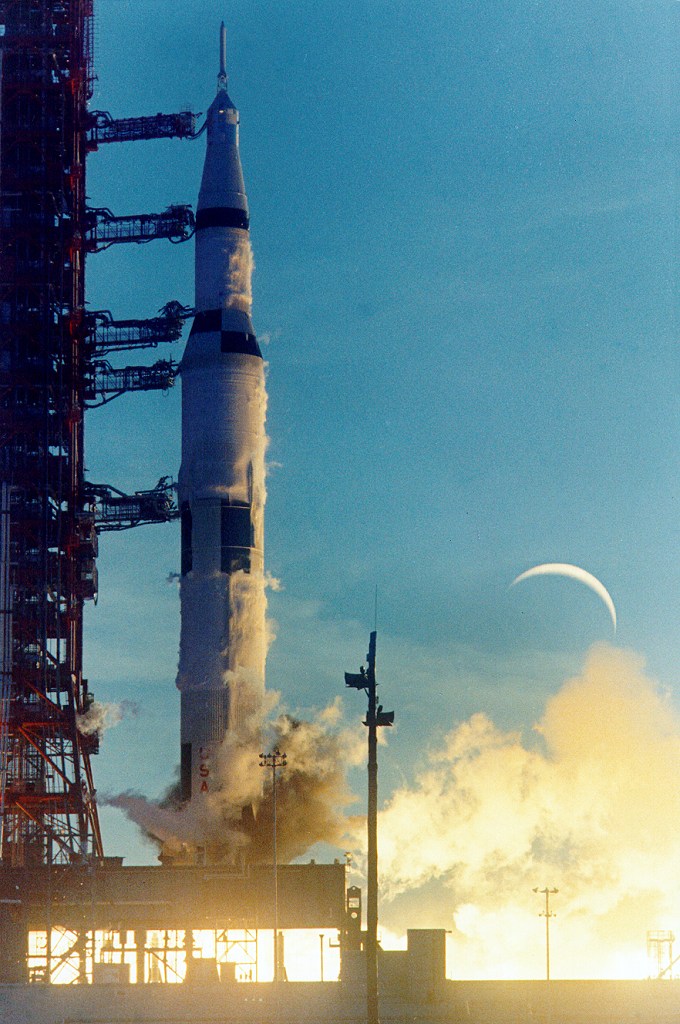
The S-II second stage was built by North American Aviation at Seal Beach, California. It was 81 feet, 7 inches (24.87 meters) tall and had the same diameter as the first stage. The second stage weighed 80,000 pounds (36,000 kilograms) empty and 1,060,000 pounds loaded. The propellant for the S-II was liquid hydrogen and liquid oxygen. The stage was powered by five Rocketdyne J-2 engines, also built at Canoga Park. Each engine produced 232,250 pounds of thrust (1,022.01 kilonewtons), and combined, 1,161,250 pounds of thrust (5,165.5 kilonewtons).³
The Saturn V third stage was designated S-IVB. It was built by Douglas Aircraft Company at Huntington Beach, California. The S-IVB was 58 feet, 7 inches (17.86 meters) tall with a diameter of 21 feet, 8 inches (6.604 meters). It had a dry weight of 23,000 pounds (10,000 kilograms) and fully fueled weighed 262,000 pounds. The third stage had one J-2 engine and also used liquid hydrogen and liquid oxygen for propellant. The S-IVB would place the Command and Service Module into Low Earth Orbit, then, when all was ready, the J-2 would be restarted for the Trans Lunar Injection.
Eighteen Saturn V rockets were built. They were the most powerful machines ever built by man.
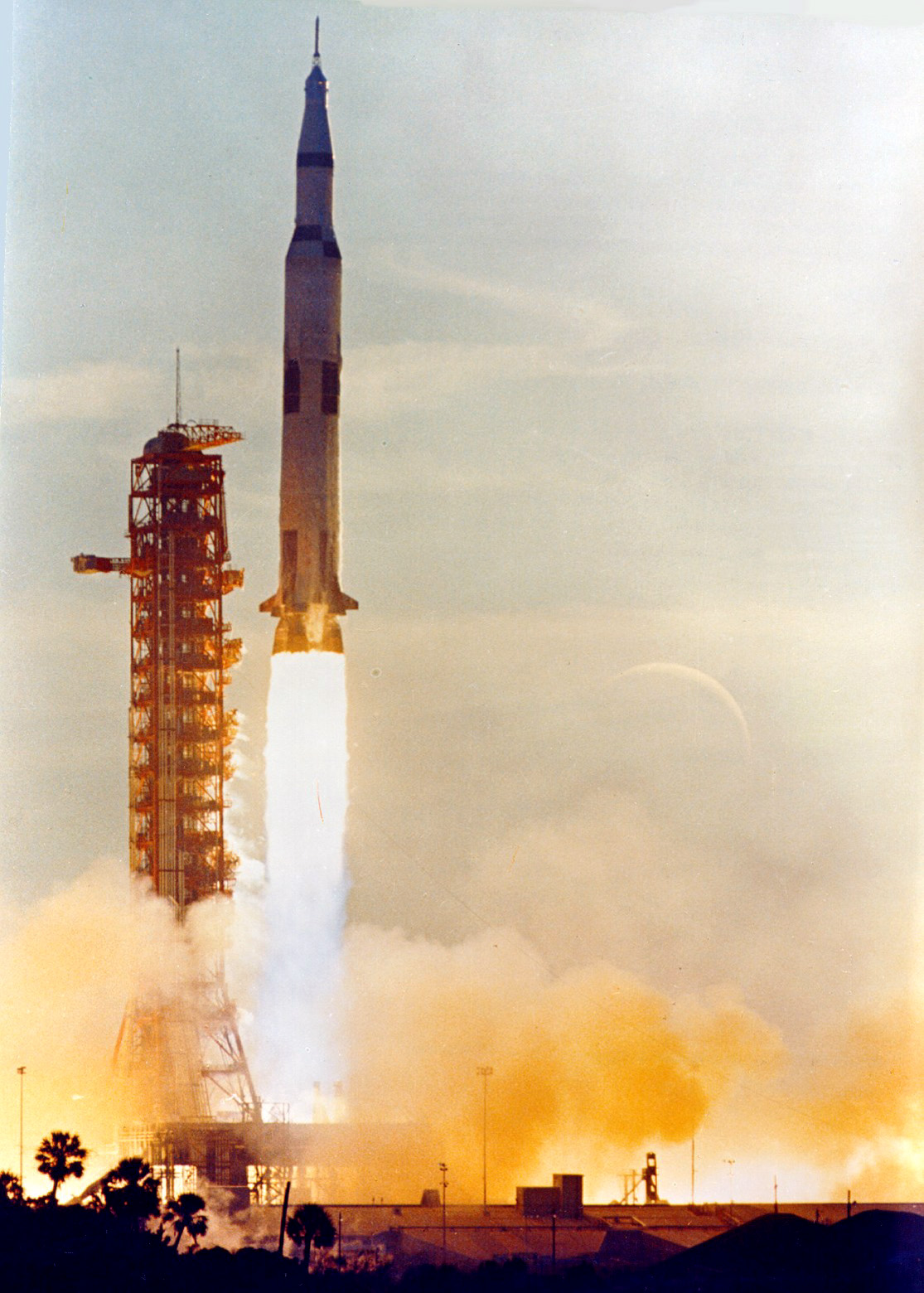
¹ The AS-503 total vehicle mass at First Stage Ignition (T –6.585 seconds) was 6,221,823 pounds (2,833,171 kilograms).
² Post-flight analysis gave the total average thrust of AS-503’s S-IC stage as 7,726,936 pounds of thrust (34,371,122 Newtons).
³ Post-flight analysis gave the total average thrust of AS-503’s S-II stage as 1,143,578 pounds of thrust (5,086,888 Newtons).
⁴ Post-flight analysis gave the average total thrust of AS-503’s S-IVB stage as 203,053 pounds of thrust (903,225 Newtons) during the first burn; 201,530 pounds (896,450 Newtons) during the second burn.
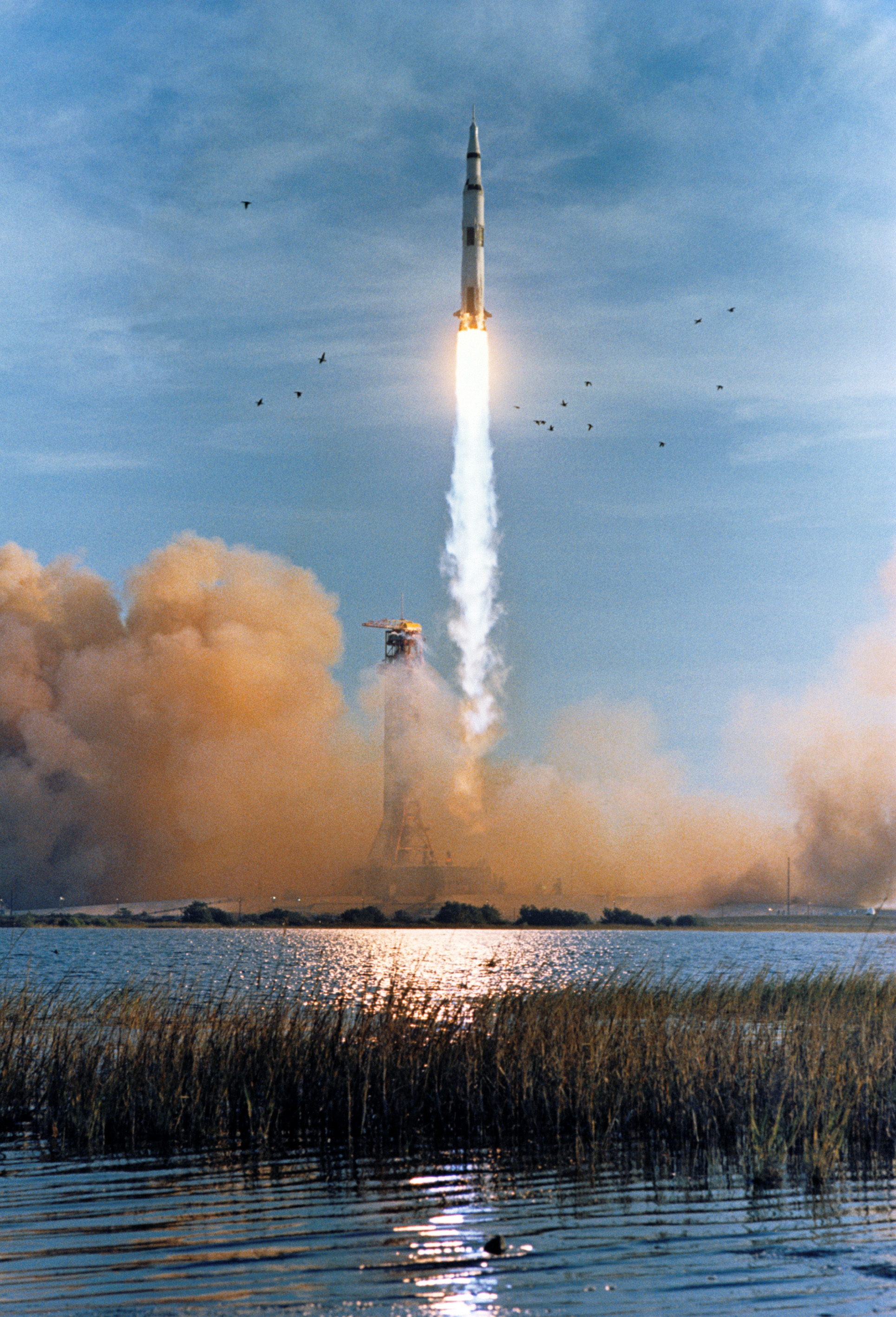
© 2018, Bryan R. Swopes
